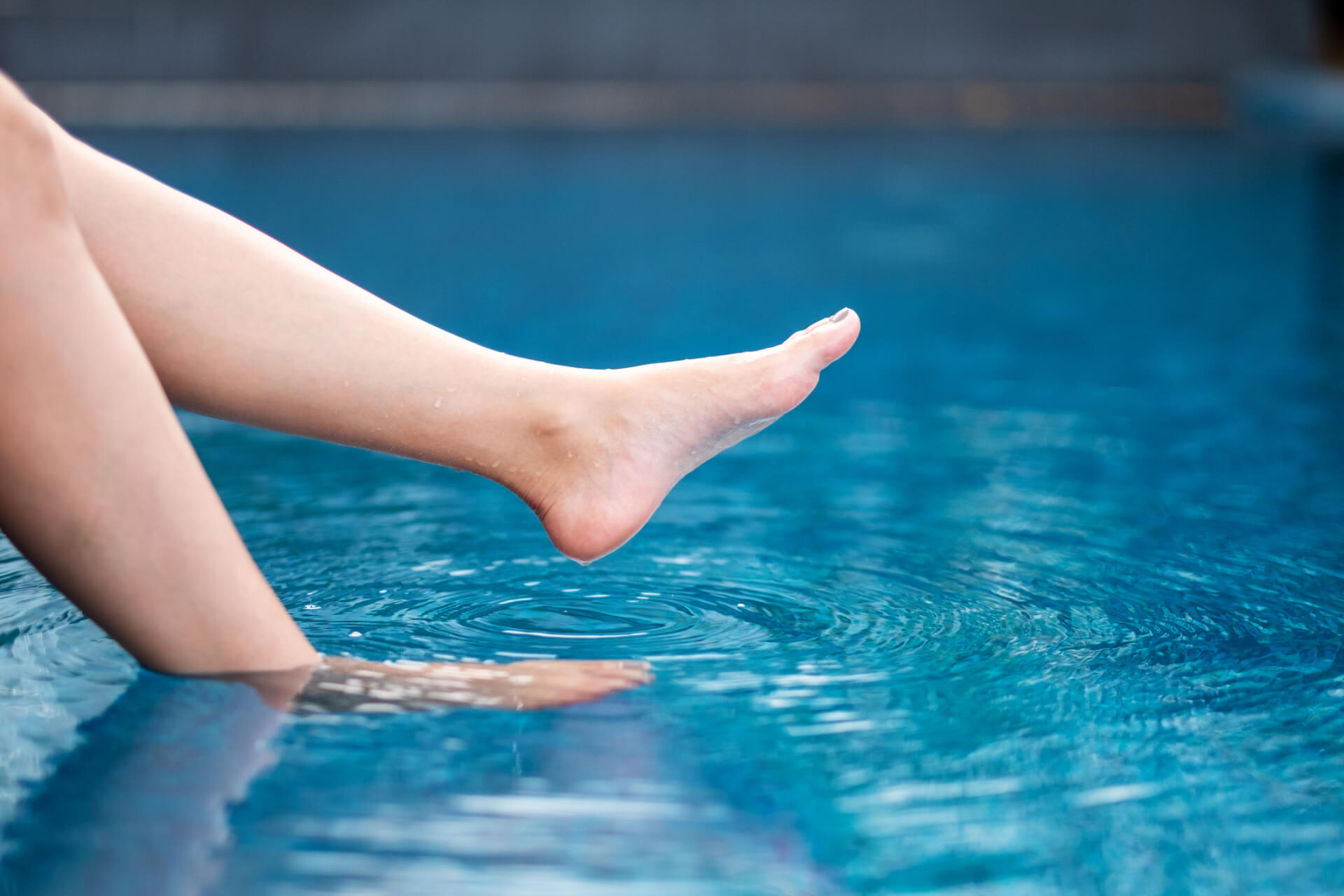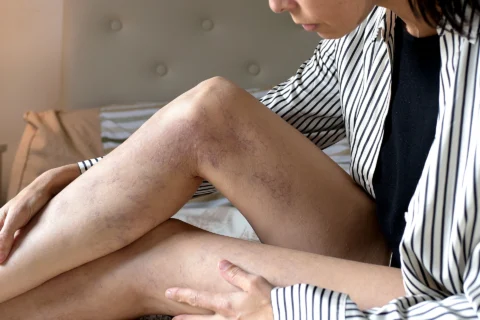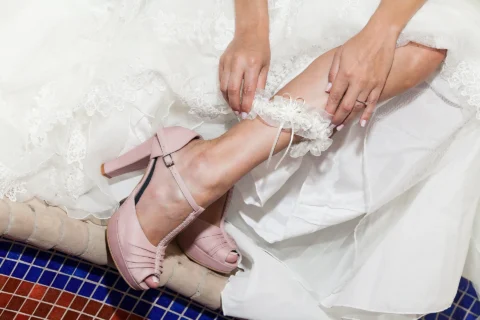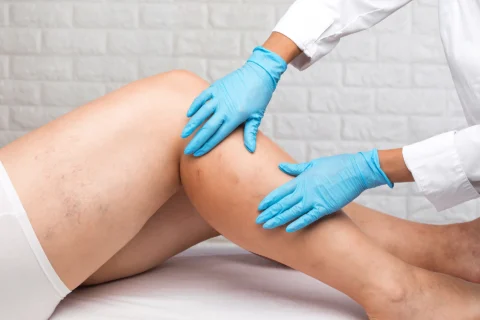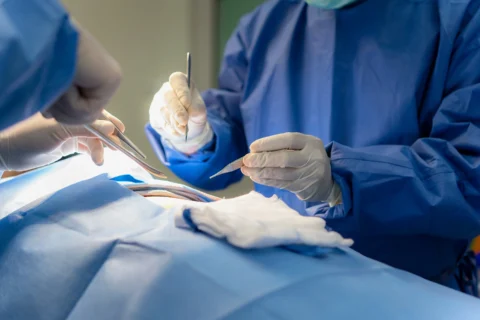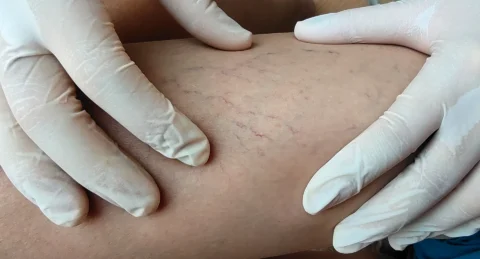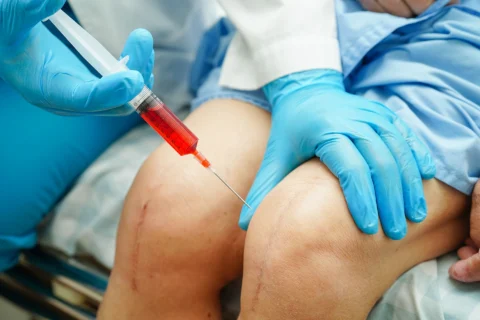Visible veins are a venous disease that can happen to almost all people at any age. The risk of having an enlarged vein, or varicose vein, is especially high for those who are older, have a sedentary lifestyle, or have an existing vascular condition that can affect the normal blood flow to the heart.
While the appearance of the unsightly rope-like veins is frustrating, varicose veins may also come with leg pain and aches that can affect one’s activities.
So what can help to alleviate the pain from varicose veins? To manage varicose vein pain and discomfort, you need to restore proper blood circulation and maintain a healthy vein. This can be done by making lifestyle and diet changes, exercising, wearing support garments such as compression stockings, elevating the legs, and putting legs in cold water. There are also vein treatment options that can remove varicose veins for good.
What Symptoms Come With Varicose Veins?
There are two kinds of veins in the leg muscles: deep and superficial vein. The superficial veins are the veins that are found beneath the skin’s surface and are often visible to the eye, while the deep veins are located deep in the body and are responsible for carrying blood to the heart.
In the superficial veins of the legs, the saphenous vein is a large vein where most of the varicose vein problem originates. These veins also have one-way valves that push blood from the legs back to the heart. When you have a damaged saphenous vein, the vein valves can cause blood to flow backward and result in a condition known as chronic venous insufficiency.
The reverse blood circulation may create pressure, causing the vein wall to stretch and result in a bulging and painful leg vein. Varicose leg vein pain can also occur when there is inflammation or blood clot in the affected vein. The general symptoms of pain and discomfort in smaller varicose veins and severe varicose veins are:
- Leg fatigue or heaviness
- Muscle cramps
- Throbbing or burning pain in the lower leg
- Swelling in the ankle or calf muscle, dry and itchy skin
- Skin discoloration in the diseased vein
These symptoms can get worse on warm or summer days since high temperatures can cause a blood vessel to dilate. If untreated, a varicose vein may build up too much pressure in the legs and cause venous ulcer or affect the deep veins and lead to deep vein thrombosis.
Tips For Varicose Veins Pain Relief
There are measures that can help reduce the chances of having the vein disease and provide temporary varicose vein pain relief at home. Here are several ways to minimize the discomfort from varicose veins:
1. Lifestyle and diet changes
Having regular exercise promotes healthy blood circulation in the body. Leg exercises can strengthen and tone your leg and calf muscles. Even simple aerobic routines like walking or jogging can ensure that blood continues to circulate and does not pool in the leg veins.
Exercising can also help maintain a healthy weight. Being overweight is a risk factor for having varicose veins since the extra weight can greatly pressure the blood vessels. You should also strive to follow a healthy diet and eat foods that are high in fiber and potassium to keep the veins healthy. It’s also good to eat citrus fruits since they are natural sources of bioflavonoids which are known to strengthen your veins and prevent them from damaging.
2. Leg elevation
Elevating your legs is a simple and quick treatment to relieve pain from varicose veins. Doing this will lessen the pressure in the veins and allow the blood to flow from your lower extremities up towards the heart. This should be done for at least 15 minutes and during that period, you should make sure that the legs are positioned higher than the heart.
You can do this by lying down on the floor and propping up your feet and legs on a sofa or table. You can also stretch your legs on the wall or pile at least four to five pillows and rest your feet on the stack.
3. Cold water treatment
Cold therapies are known to reduce swelling and inflammation in a pained or injured area. Using this principle, it is said that soaking your feet in a basin with cold water can relieve the discomfort that you are feeling from varicose veins. Cold temperatures help restrict blood flow by narrowing or shrinking the blood vessels and this in turn relieves varicose vein pain and minimizes leg swelling.
4. Avoid high-heeled shoes and tight clothes
When you have varicose veins, it’s important to dress in comfortable and loose-fitting clothes to relieve some of the pressure from the veins and allow blood to flow normally. Likewise, constantly wearing high-heeled shoes can limit your range of motion and prevent calf muscles from moving blood to the heart. It’s best to wear flats, low-heeled shoes, or those with support cushions to keep your feet comfortable and lessen the strain on the veins.
5. Drink plenty of water
Staying hydrated is not just important for your wellness but it also has positive effects for your vein health. Drinking water helps support blood circulation by thinning the blood so it will smoothly pass through the veins. It also strengthens the muscles that support the veins and prevents any potential blood clot formation to lessen pain of varicose veins.
6. Support your legs with compression stockings
Compression therapy is often a recommended treatment to restore a healthy blood flow in the veins. This usually involves wearing a special type of elastic garments such as compression stockings, hose, or socks. These apply pressure to compress the leg veins so that blood won’t accumulate in the veins and ensure that they flow to the heart. People with jobs who require them to stand or sit for prolonged periods are generally advised to wear compression hosiery.
7. Massage the affected area
Massaging the area with varicose veins can provide temporary relief from swollen legs and feet, leg cramps, and aching or heavy legs. The key to a good massage is having a gentle touch and avoiding directly pressing on the affected veins. You should go to a massage therapist who knows how to properly perform a massage to minimize complications. They may also use essential oils to provide more comfort for your vein symptoms.
Read more: Ways You Can Treat Varicose Veins at Home
What Can You Do If The Pain Doesn’t Go Away?
If the pain from varicose veins doesn’t seem to get better with home treatments, it may be time to seek the appropriate vein treatment from a vein clinic. Often, the best option for permanent pain relief is to remove the troublesome veins and this can be done via varicose vein treatment options such as:
Laser vein treatment
Laser treatment is a minimally invasive vein removal procedure that uses laser energy to destroy the damaged vein. During the treatment, a practitioner will place a device against the skin and this will transmit laser energy that will heat the affected vein and cause them to close off. Eventually, the treated varicose vein will shrink and fade over time. This is also an effective treatment for spider vein disorders and reticular veins.
Endothermal ablation
Endothermal ablation is a procedure that uses heat to form a scar tissue on the diseased veins so that they will close its walls. This usually requires using a catheter to access the stretched vein and through this thin tube, a fiber is inserted to emit either laser heat (endovenous laser ablation) or radiofrequency energy (radiofrequency ablation).
Sclerotherapy
Sclerotherapy uses injections of a chemical liquid or foam solution to the veins. This solution will cause the affected veins to close and redirect the flow of blood to healthier veins. The body will eventually destroy and absorb the injected vein which improves the appearance of varicose veins and makes them less visible. The number of injections you’ll need will depend on the size and severity of varicose veins but rest assured that this treatment removes them for good.
Learn more: What Are the Options for Varicose Vein Surgery?
Get Rid Of Varicose Veins Pain At Vein Center Doctor
Varicose veins on the legs may be accompanied by pain and discomfort, and it may develop to serious vascular conditions if not treated immediately. While simple home remedies can help for varicose veins and leg pains, it’s best to consult with a vein specialist and receive the ideal treatment for your condition.
Vein Center Doctor is an established vein clinic that specializes in holistic vein care and customized vein treatments. We are committed to providing the best patient care and service so that you may be able to live a vein-free and pain-free life. Contact us now and schedule a consultation with our expert vein doctor.

